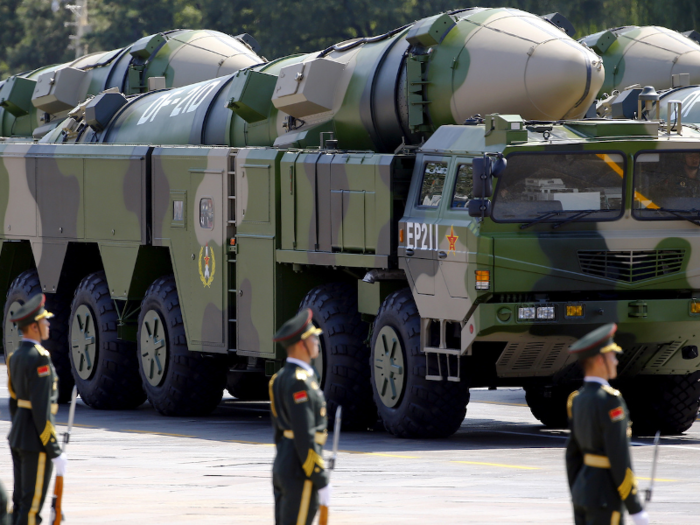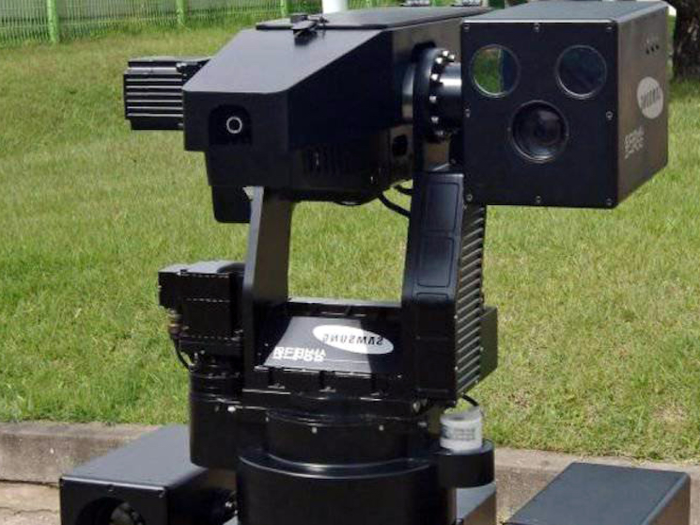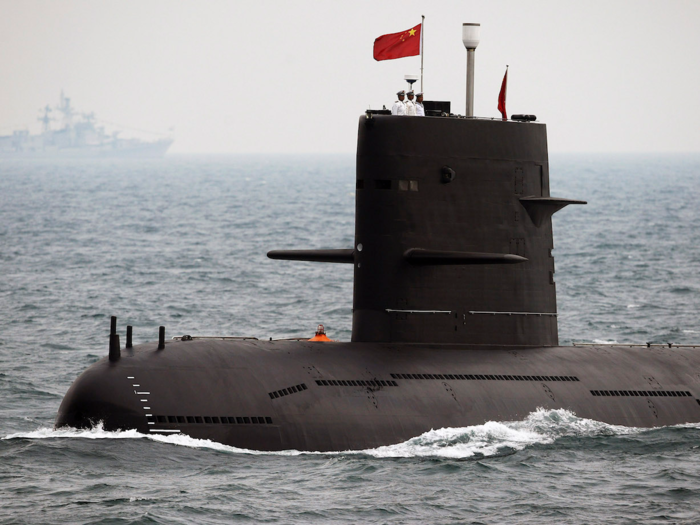- Home
- slideshows
- miscellaneous
- China's military power may surpass the US's faster than you think, thanks to 6 shrewd strategies
China's military power may surpass the US's faster than you think, thanks to 6 shrewd strategies
1. The Chinese government is hacking its way to new technology.

2. China is breaking down US systems.

China also works to break down US battlefield defenses. The US high-technology battlefield system — the so-called "kill chain" — is comprised of four grids that, working in concert, "find, fix, and finish intended targets," according to the report.
The battlefield grids have to communicate with each other — and that's where China's strategy is focused on finding and exploiting vulnerabilities to jam the communication system, degrading an adversary's ability to strike in concert and, hopefully, make those strikes less effective.
3. Strike early, strike hard.

China's strategy to offset US dominance and gain tactical advantages also depends on its ability to strike early in a conflict, and strike hard. China's focus on developing long-range ballistic and cruise missiles that match US weapons like the Advanced Medium Range Air-to-Air Missile, or AMRAAM, which has a range of 100 nautical miles. In some cases, Chinese weapons outmatch US weapons ranges.
This strategy is cost-effective and exploits the US's previous decision to forgo missiles with a range longer than 500 km under the recently-deceased INF treaty; the US tested its first post-INF range ground-launched missile on August 18. Plus, China can call massive mobile, land-based missile strikes with relative ease, exploiting the US's dependence on air-based bombardments, which take longer to coordinate.
China has so focused on its missile strategy that it has created a branch of its military entirely devoted to it — the People's Liberation Army Rocket Force (PLARF), which is now developing "some of the most advanced cruise and ballistic missiles of any force," including hypersonic missiles and the DF-21D "carrier killer," which has a nearly 1,000-mile range, according to the report.
4. China hides its hand.

All these so-called "offset" strategies include some element of capability concealment, to suprise adversaries during battle. The US calls these "black capabilities," kept under lock and key by military and state apparatus. While China may show off some of its capabilities, like the "carrier-killer," as a deterrent, it keeps what some observers call "Assassin's Mace" or Project 995 weapons, secret.
Work speculates that these "black" capabilities might include "directed energy weapons, advanced space weapons, electromagnetic railguns, high-powered microwave weapons, or even more exotic arms."
5. China leads in artificial intelligence.

China's goverment notoriously uses artificial intelligence to track and control its population. It's also betting that AI like autonomous unmanned systems, human-machine hybrid intelligence, automated decisionmaking, and intelligent robotics are the future both of economic advancement and warfighting, and it's determined to come out on top.
China's tactic of military and civil fusion also works here, as advancements in the civilian sector will be easily adapted to military capabilities.
6. Their economy is a juggernaut and its technology could readily be translated into mass producing world-class military systems.

China's economy is the second-largest in the world, and it's on the path to overtake the US's in absolute GDP by 2030 — giving China the ability to spend far more resources on its military than in previous decades.
From 1996 to 2015, China increased its military spending by 620%.
What can the US do?

After decades of primacy and focusing on conflicts in the Middle East, the US is unprepared for the kind of power China is building. So what can the Defense Department do to improve its chances in a great power matchup with China? Work's report proposes the following.
- Study and expolit weaknesses in China's strategy.
- Weaken China's confidence in their own ability to drive the narrative of conflict and weapons developments by showing our own military prowess and understanding of their strategy.
- Ensure that US technology, strategy, doctrine, and organizations fit together seamlessly to achieve the US's desired end state.
The US military "has a demonstrated ability to question the status quo, to take risks and experiment, and adopt new technologically enabled operational concepts that confound its opponents," Work's report observes.
"If it hopes to upset the Chinese offset, it will need to do so again."
Popular Right Now
Popular Keywords
Advertisement